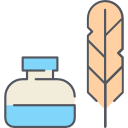Text
Plant resources of South-East Asia Cryptogams: Algae
This volume deals with the algae that are used in some form in South-East Asia. Their utilization falls mainly into four main categories: direct human consumption (vegetables, salads, health food), production of phycocolloids, raw material for animal feed and fertilizer, and medicinal and pharmaceutical uses. Small and unicellular algae (microalgae) are used differently from the larger ones (macroalgae). Several marine macroalgae (seaweeds) as well as a few microalgae are commercially cultured in large quantities, Among the more than 70 taxa included are vegetables such as seagrapes, purpleweed (nori) and also Spirulina and Chlorella. Important producers of phycocolloids are Betaphycus, Euchema and Kappaphycus for carrageenan production, Gelidium, Gelidiella and Gracilaria for the production of agar and Sargassum for alginate production. Many species of seaweeds can be used as animal feed, while microalgae often have an important role as feed for larvae of fish, crustaceans and molluscs. The use of seaweeds as fertilizer is profitable: Halimeda adds lime, while many blue-green algae can be used to enhance nitrogen fixation. Examples of medicinal and pharmaceutical uses are Acetabularia major (against gall-stones) and Digenia simplex (a vermifuge).
Ketersediaan
Informasi Detail
- Judul Seri
-
-
- No. Panggil
-
333.9538 REI p
- Penerbit
- Bogor Selatan : PT. Pembangunan., 2001
- Deskripsi Fisik
-
318 hlm.: ilus.; index; 27 cm.
- Bahasa
-
Inggris
- ISBN/ISSN
-
905782096X
- Klasifikasi
-
333.953 8
- Tipe Isi
-
-
- Tipe Media
-
-
- Tipe Pembawa
-
-
- Edisi
-
No 15 (1)
- Subjek
- Info Detail Spesifik
-
-
- Pernyataan Tanggungjawab
-
-
Versi lain/terkait
Tidak tersedia versi lain
Lampiran Berkas
Komentar
Anda harus masuk sebelum memberikan komentar

 Karya Umum
Karya Umum  Filsafat
Filsafat  Agama
Agama  Ilmu-ilmu Sosial
Ilmu-ilmu Sosial  Bahasa
Bahasa  Ilmu-ilmu Murni
Ilmu-ilmu Murni  Ilmu-ilmu Terapan
Ilmu-ilmu Terapan  Kesenian, Hiburan, dan Olahraga
Kesenian, Hiburan, dan Olahraga  Kesusastraan
Kesusastraan  Geografi dan Sejarah
Geografi dan Sejarah